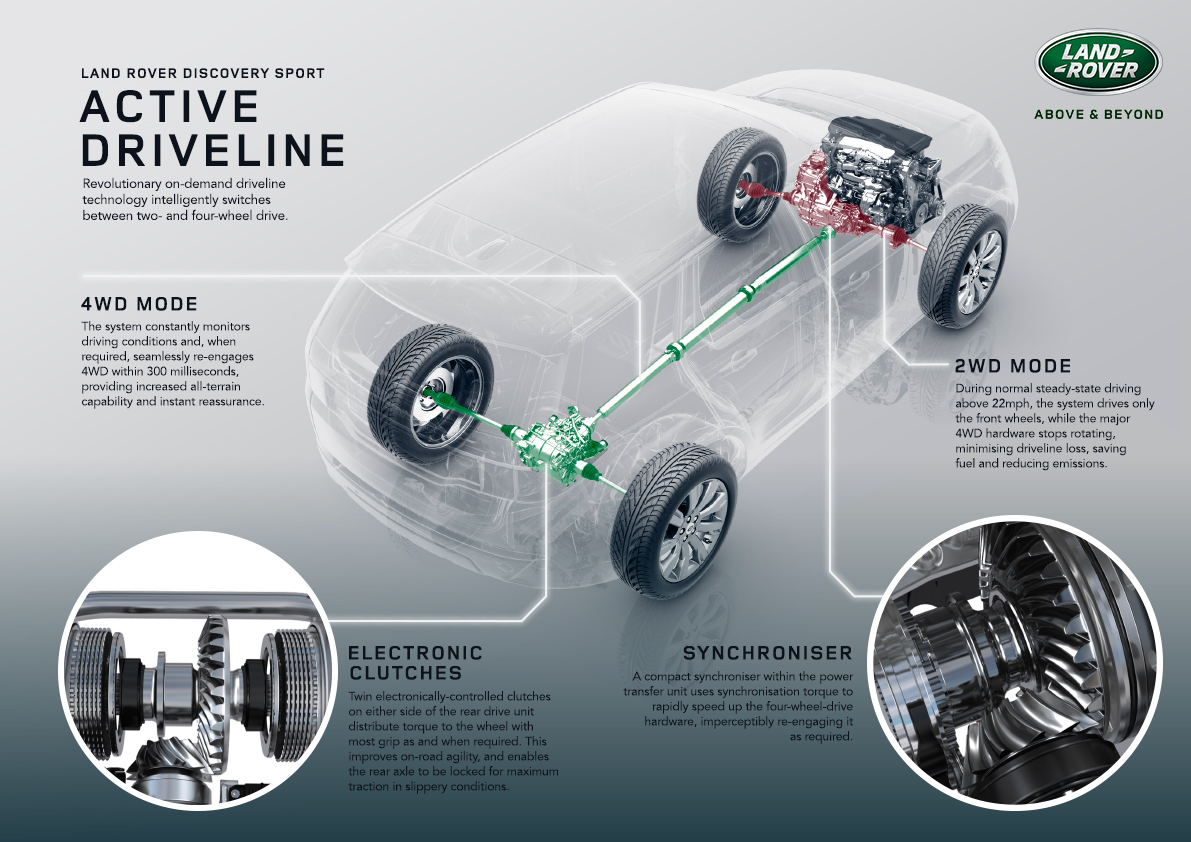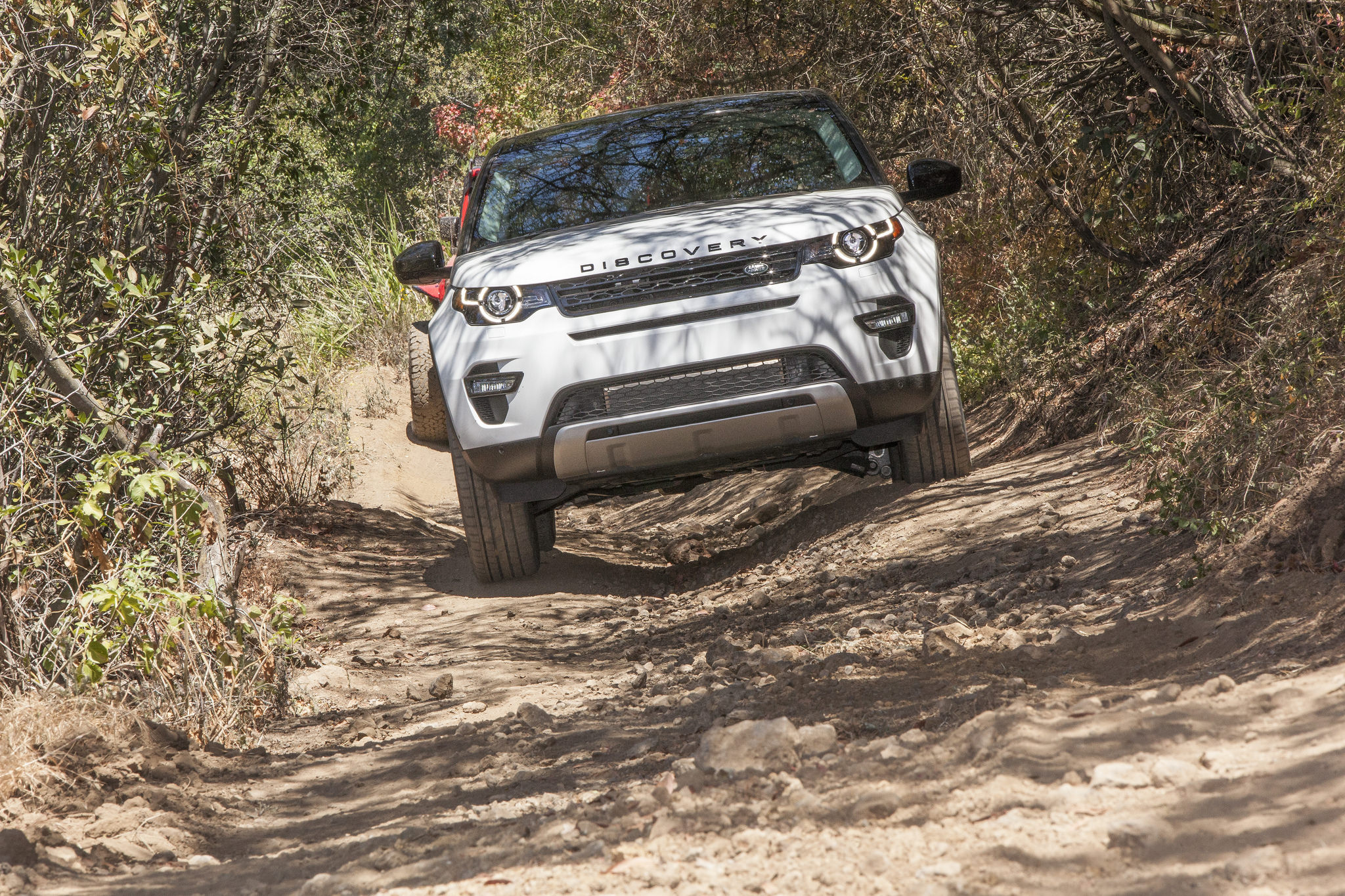UNITED STATES—It can be a risky move, affixing a name that has long stood for rugged go-anywhere capability onto a vehicle that has crossed over to the car side of the forced air induction vehicle offerings from Land Rover. The folks over at Jeep are receiving a bit of backlash from Cherokee fanatics for building the new Cherokee upon a car-based chassis shared with softly sprung sedans. Will Land Rover go through the same awkward transition in applying a similar process to the development of its new 2015 Discovery Sport? Or can Land Rover adapt modern technology to the job that was once delegated to two solid axels and a ladder frame?
There is only one way to find out. We have to take the new Discovery Sport on Safari. The Serengeti is, unfortunately nearly 10,000 miles away so the off-road course at Calamigos Ranch in Malibu, CA will have to suffice. Consisting of winding trails designated as either “black dot” or “red dot” based on the level of difficulty (much like the slopes at a ski resort), the off-road road course at Calamigos Ranch enables Motor Press Guild journalists to find out just how capable a vehicle is off the pavement.
As the morning fog begins to lift, it becomes clear that Land Rover does not intend to pass off its newest crossover as a serious off-road vehicle. While some manufacturers at this comparison event (Droptops & Dirt) have marked their respective crossovers and SUVs with a black sticker, Land Rover has taken a more conservative approach with the Discovery Sport. Land Rover has marked the Discovery Sport eligible for the “red dot” course only. This is not a big surprise. Land Rover has reserved its spot in the “black dot” class for its venerable Range Rover. There is nothing to be won by pitting its own vehicles against each other. But rest assured, the “red dot” course is nothing to be taken lightly. More than just a dusty trail with a few mud puddles, the “red dot” trail consists of steep grades and plenty of ruts. To emphasize this trail’s difficulty level, consider this: The Mazda press fleet accidentally sent a CX-5 without the optional all-wheel-drive. By the time this mistake had been discovered, the Mazda crossover had become stuck in a rut (no pun intended) about a tenth of the way through the “red dot” course. A “pro” had to be summoned to carefully back the two-wheel-drive vehicle down to base camp.
Fortunately, there is no two-wheel-drive variant of the Discovery Sport, so the aforementioned scenario and the embarrassment that comes along with it will not occur. Furthermore, Land Rover has painstakingly honed its electronic Terrain Response system to enable a driver to maintain some level of involvement during off-road driving. Choosing either Eco, {Grass, Gravel & Snow}, Mud & Ruts, Sand, or Rock Crawl affectively changes things like throttle sensitivity, traction control sensitivity, front/rear torque split, etc. An optional surround view camera enables a driver to see any off-road obstacles that might be lurking in a blind spot.

Was all this modern technology enough to make up for the Discovery Sport’s lack of traditional off-road hardware? On the “red dot” course, it was. While any traction control-reliant all-wheel-drive system requires some getting used to when selectable locking differentials are your traditional saviors, once you become accustomed to the inevitable rollback that comes with a reactive Haldex system, your confidence begins to build. Selecting a more aggressive Terrain Response setting such as Mud & Ruts will minimize any unsettling momentum reversal (i.e., rollback) and the surround view camera will give you an idea of the best possible path to take to avoid any potential traction-loss situations to begin with. Fortunately, the extended wheel travel afforded by the clever rear suspension geometry eliminates much of the traction issues that plague many crossovers. In our test, there was rarely a moment during which all four wheels weren’t in contact with the terrain.
As for the lack of a low-range transfer case, the Discovery Sport’s torque-packed turbo and nine-speed automatic transmission with extra low first gear took care of that. When many naturally aspirated crossovers equipped with more traditional 5 or 6-speed transmissions find themselves running out of grunt, the Discovery Sport surprises you with the perfect gear that keeps the engine humming along in the meaty part of the torque curve. We never found ourselves yearning for a lower gear on the “red dot” trail.
Of course, if you find yourself wondering what you might be missing over on the “black dot” course, there are a couple of options available. You could forgo some luxury, on-road ride quality, and seating for seven by opting for the keys to a Cherokee Trail Hawk, or, forgo some cash by opting for a top-of-the-line Land Rover LR4. Chances are, though, a typical Discovery Sport owner will rarely, if ever, need more than a Discovery Sport can give. $37,070 will put you into a base Discovery Sport SE, but seating for seven will run you another $1,750. At a price still under $40K, that is not a bad way to go. Please leave questions or comments below or email Kyle at kyle@canyon-news.com.






